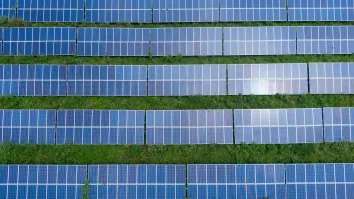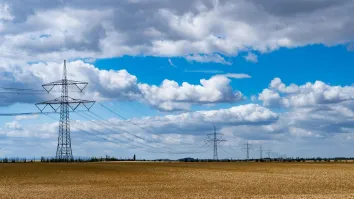
Geo Dipa, powering up Indonesia’s progress with geothermal innovation
This state-owned enterprise has set a target of 1,000 MW from geothermal power plants by 2060.
Despite having a depth of resources, Indonesia’s development of geothermal energy is still considered slow and lagging. To speed up the process, the government is taking serious steps by making PT Geo Dipa Energi (Persero) a Special Mission Vehicle aimed at expanding geothermal development.
According to data from the Ministry of Energy and Mineral Resources (ESDM), the installed capacity of geothermal power plants in 2022 was 2.286 megawatts or only 10% of the total geothermal potential of Indonesia, which is approximately 23 gigawatts.
Some of the obstacles to reaching its full energy potential can be traced to high geothermal resource uncertainty risk in the exploration stage, where power purchase agreements (PPA) are not yet in place. Geothermal development is quite a long process, taking about three years for exploration and another three years for construction.
On the other hand, new renewable energy sources cannot replace fossil energy in the short term.
“For this reason, it is necessary to establish regulations and policies in the medium and long term that support the acceleration of new and renewable energy,” said Supriadinata Marza, director of Operations & Health and Safety, Social and Environmental at Geo Dipa.
Speaking to Asian Power about these challenges, the Geo Dipa director who goes by the nickname, Rio, said there lies significant opportunities within the development of geothermal energy. “Geothermal can serve as a base load to replace coal plants, as it provides uninterrupted electricity supply 24 hours a day,” he said.
Rio elaborated that unlike coal, geothermal power does not depend on global commodity prices and transportation costs. “Geothermal energy can consistently generate electricity, as long as we effectively and sustainably manage primary energy by channeling steam to the power plant,” he said.
Rio also noted that the availability factor for geothermal energy is also high with a level of 90% to 95% compared to other new renewable energy types such as hydroelectric power plants with an availability factor of only 30%.
Special Mission Vehicles
In accelerating and expanding geothermal development, Geo Dipa has a special task.
First, as a state-owned enterprise, the company is responsible for organising, operating, and managing existing geothermal fields such as the Dieng Geothermal Working Area (WKP) in Central Java and Patuha in West Java, while implementing state (Government) values and objectives.
At present, Geo Dipa has been operating the geothermal power plants (PLTP) Dieng and Patuha for unit-1, each with a 60-MW gross installed capacity.
The development of unit 2 in Dieng and Patuha is underway with a capacity of 60 MW (gross) each and is projected for completion by 2026.
Geo Dipa obtained an energy sales contract (ESC) with the state electricity company or Perusahaan Listrik Negara(PLN) for ESC Dieng and Patuha, which was signed in 2004.
The company also received an assignment from the Government for geothermal exploitation in 2017 for the Geothermal Working Area at Candi Umbul Telomoyo with a potential of 54 MW and WKP Arjuna Welirang with a potential capacity of 230 MW.
Second, Geo Dipa’s role extends to acting as a Special Mission Vehicle (SMV) in accordance with Minister of Finance Regulation 80/2022.
This positions the energy company as a mechanism for alleviating bottlenecks and mitigating risks in geothermal development.
“Debottlenecking primarily addresses the resource risk of geothermal along with the issue of financing, which has historically hindered geothermal development. Thus, Geo Dipa secures funding from both state equity and green funds,” said Rio.
The management of this Green Fund lies with another state-owned enterprise, PT Sarana Multi Infrastruktur (PT SMI), with potential funding sources including institutions like the World Bank.
“In light of the considerable risk inherent in exploration, successful developers will have their funds fully reimbursed, whilst those that unsuccessful may potentially receive a maximum amount of 50% forgiveness,” Rio said.
Conversely, with regards to derisking, Geo Dipa’s primary role involves conducting comprehensive studies on geothermal exploration, a critical risk in managing this energy source.
This exploratory phase usually targets fields that may be less enticing, possessing exploitable distribution potential but also bearing a price risk that might render them economically non-viable for developers.
“Consequently, through PMK PISP 80/2022, we were assigned with a technical implementing agency role, whilst PT SMI as financial management, and IIGF for ring fencing. Following Geo Dipa’s completion of surveys and drilling activities, the data is then returned to the government. This risk reduction renders the field more appealing and open for auction,” he explained.
The fields designated by the government for Geo Dipa under the governmental drilling initiative are categorised as green fields. Among these green fields are WKP Jailolo situated in eastern Indonesia.
Geothermal innovation
In promoting the utilisation of geothermal energy, Geo Dipa embraces the latest technology to enhance electricity generation more efficiently.
Geothermal energy utilisation is divided into two approaches: directly utilised, where heat energy is used without conversion; and indirect utilisation, involving the conversion of heat or fluid energy into electrical power.
Geo Dipa is on-going carrying feasibility studies on the direct use of geothermal, including critical mineral extraction from geothermal separated brine.
So far, they have found that there are associated minerals in the process such as silica to produce colloidal silica and lithium to produce lithium carbonate and lithium hydroxide, which have a potential value that can match financial benefits from geothermal electricity generation.
Innovation goes beyond technological advancements and extends to funding strategies.
Besides receiving financial support from the government, the state-owned enterprise also received funding managed by the Asian Development Bank (ADB) through the Clean Technology Fund (CTF) for the geothermal power plant (PLTP) Unit-2 project in Dieng and Patuha and the Japan Fund Joint Crediting Mechanism (JFJCM) for the PLTP Patuha Unit-2 project.
JFJCM is an additional investment grant for the latest equipment that can reduce carbon emissions and enhance the reliability of PLTP.
“The advantage of geothermal development is that it can be carried out by implementing efficient technology and reducing carbon or CO2 emissions,” Rio told Asian Power.
Meanwhile, to support the acceleration of geothermal development and Indonesia’s net-zero emission target in 2060, a strategy is needed in the medium term.
Rio suggested that SMV role can be widened to developing brown fields, not only green fields, which require a long exploration process of around 10-12 years to operate.
“In the brown field it might take up to five years like we did at the Patuha Unit-2 WKP, which received US$300 million (IDR4.56t) in funding or soft loans from ADB and our exploitation has reached 90% with a success ratio of 70% and within 5 years already able to generate electricity. To implement this, regulations from the government are needed,” he said
Contribution
With the geothermal development efforts undertaken, Geo Dipa managed to record dividends for the government of IDR17.9b (US$1.18m) in 2022. The company’s total production bonus in 2015 at WKP Unit-1 Dieng and Patuha was IDR32.75b (US$2.16b).
The geothermal development carried out by Geo Dipa is also in line with the goals of the government’s sustainable and low-carbon energy targets. This state-owned enterprise has a target of installing 1,000 MW out of geothermal power plants in 2060.
“As I mentioned before, geothermal energy is not situation dependent like coal-generated energy. We have managed the field with good performance so that it can supply electricity as a base load. If it is calculated that a 60-MW PLTP can reduce carbon emissions equivalent to 400,000 tons per year,” Rio stressed.
In the end, Rio believes that the acceleration of geothermal development can be achieved through a combination of government supportive regulations, funding, and the establishment of comprehensive plans and infrastructure for both the long and medium terms.

















 Advertise
Advertise






